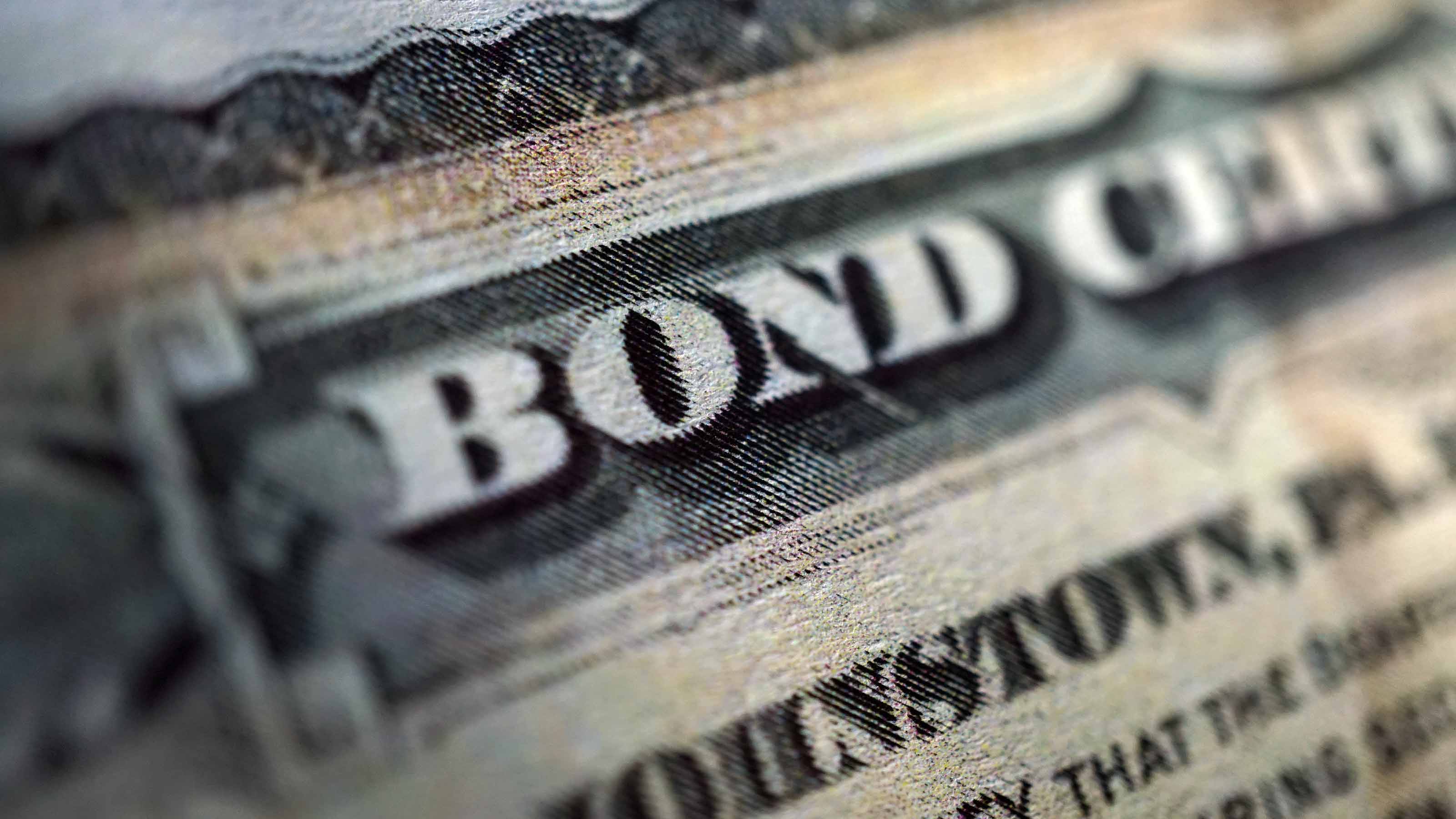The Best ETFs to Buy Now
Finding the best ETFs to buy in an uncertain market environment can seem like a tall task, but these five picks are a good place to start.


Exchange-traded funds (ETFs) offer investors a variety of strategies to prepare for whatever the market throws at them – a stock market sell-off, Federal Reserve moves, policy uncertainty, economic instability and just about everything else under the sun.
We kept all of these factors in mind as we built this list of the best ETFs to buy now.
Overall, the stock and bond markets have done well over the past 12 months or so thanks to stabilizing inflation, rate-cut excitement and demand for all things artificial intelligence (AI).
Investors continue to adjust to the Trump administration and its new global trade policy, with uncertainty about tariffs roiling markets and the economy.
There are still plenty of potential fireworks that could spark further volatility in stocks and bonds in the near term. Sticky inflation has already prompted the Fed to pause rate cuts for the foreseeable future. And the impact of tariffs on inflation is a big unknown.
However, Tony DeSpirito, chief investment officer of U.S. Fundamental Active Equity and lead portfolio manager of the BlackRock Equity Dividend portfolios, says that a little volatility isn't necessarily a bad thing.
"Market resets can provide opportunities for investors to establish or increase exposure to stocks in which they have high conviction ― and at a discounted price," he noted at the end of 2024.
In particular, investors should be tuned into high-quality stocks, which tend to outperform in the year following the onset of rate cutting, DeSpirito adds.
And ETFs loaded with strong companies that have proven their ability to navigate an uncertain market make sense because they spread out risk across a basket of stocks.
How do you choose the best ETFs to buy?
Today we're going to take a look at five of the best ETFs to buy now. This of course raises questions about what exactly defines a strong ETF and where we should go to look for them.
To start, it's generally a good idea to stick to broad-based ETFs. You don't have to put your entire portfolio in an S&P 500 index fund, though doing so isn't necessarily a bad idea, particularly if your account is modest in size and diversification is difficult.
Sector ETFs and highly specialized single-strategy ETFs can add value under the right set of circumstances, and you may have your reasons for wanting targeted exposure.
But it makes sense to keep those positions relatively small while leaving the bulk of your portfolio in more diversified ETFs.
Costs are also a consideration. It's not going to have a major impact on your long-term returns if you hold an ETF with an expense ratio of 0.08% versus one that costs 0.10%.
Once you reach a certain low-cost threshold, it doesn't move the needle all that much to lower fees by an extra basis point. (A basis point equals 0.01%.) But every dollar you pay in fees is a dollar you no longer have available to grow and compound.
So, all else equal, it makes sense to buy low-cost ETFs rather than those with higher expense ratios.

The best ETFs to buy now
Investors wondering where to find the best ETFs to buy can take heart in the fact that there have never been more options available.
Popular websites such as Yahoo Finance and Morningstar are just two great tools for DIY investors that offer simple screeners where you rank ETFs based on the specific criteria you're looking for.
Of course, a screener should just be a starting point in your research. You should always take the time to visit the ETF sponsor's website and do a little digging of your own.
With that in mind, let's take a look at the five best ETFs to buy now. Data is as of April 3. Dividend yields represent the trailing 12-month yield, which is a standard measure for equity funds.
| Exchange-traded fund (ticker) | Assets under management | Yield | Expenses |
|---|---|---|---|
| Vanguard 500 Index ETF (VOO) | $590.5 billion | 1.4% | 0.03% |
| Vanguard Dividend Appreciation ETF (VIG) | $86.5 billion | 1.8% | 0.05% |
| Vanguard U.S. Quality Factor ETF (VFQY) | $370.5 million | 1.5% | 0.13% |
| SPDR Gold MiniShares (GLDM) | $13.2 billion | 0.0% | 0.10% |
| iShares 1-3 Year Treasury Bond ETF (SHY) | $23.0 billion | 3.9% | 0.15% |

I am the chief investment officer of Sizemore Capital Management LLC, a registered investment advisor based in Dallas, Texas, where I specialize in dividend-focused portfolios and in building alternative allocations with minimal correlation to the stock market. I am a regular contributor to several financial media outlets including Kiplinger, Forbes and MarketWatch, where I have been writing about stock and fund picks and investing topics for years.

Vanguard 500 Index ETF
- Type: Large blend
- Assets under management: $590.5 billion
- Dividend yield: 1.4%
- Expenses: 0.03%, or $3 annually for every $10,000 invested
Any discussion of the best ETFs to buy really has to start with a good S&P 500 index fund. This is where the ETF revolution started, and, decades later, it remains one of the best long-term builders of wealth you can buy.
As a market cap-weighted collection of 500 of the biggest American companies, the S&P 500 gives you instant access to industry leaders like Apple (AAPL), Nvidia (NVDA), Meta Platforms (META) and Broadcom (AVGO). In an uncertain market environment, it makes sense to stick with the biggest and best.
The S&P 500 Index is the most common benchmark for mutual funds, exchange-traded funds, hedge funds and just about everything else under the sun for a reason: It's exceptionally hard to beat over time. In a report published in 2023, S&P Global found that 92% of active large-cap fund managers underperformed the S&P 500 over the last 15 years.
Virtually every major exchange-traded fund sponsor has an S&P 500 index ETF product, and, by definition, they are all the same. That's literally the point. They all track the S&P 500.
That means the only way to differentiate the funds is by cost. With an expense ratio of just 0.03%, the Vanguard 500 Index ETF (VOO, $494.16), also one of the best Vanguard ETFs, might as well be free to own. We're talking about $3 in annual expenses for every $10,000 invested.
The iShares Core S&P 500 ETF (IVV) offers identical exposure at the same expense ratio of 0.03%, while the older SPDR S&P 500 ETF Trust (SPY) charges a slightly higher 0.095%.
Take your pick. But whichever one you choose, long-term investors should consider making an S&P 500 index ETF a mainstay in their portfolios.

Vanguard Dividend Appreciation ETF
- Type: Large blend
- Assets under management: $86.5 billion
- Dividend yield: 1.8%
- Expenses: 0.05%
In an uncertain market environment, it makes sense to focus on quality. And one of the best measuring sticks for this is a company's history of raising its dividend.
Accountants can and sometimes do fudge the numbers on earnings. A creative accountant can even fudge the numbers on sales. But dividends don't lie. Dividends are paid in cold, hard cash.
There is no greater sign of management confidence than the raising of a dividend. Every additional dollar paid out in dividends is a dollar no longer available to cover expenses. So, it sends a powerful signal that management expects a lot more cash coming in to replace it.
Furthermore, the payment of a dividend encourages good behavior from management. It shows that they take their investors seriously and like to reward them. And a CEO who is on the hook to pay a dividend is a CEO less likely to blow the company's cash on vanity projects that destroy value.
With this in mind, investors seeking out the best ETFs to buy now will want to take a look at the Vanguard Dividend Appreciation ETF (VIG, $187.76).
VIG tracks the S&P U.S. Dividend Growers Index, which includes U.S. companies that have consistently increased their dividends every year for at least 10 consecutive years. The index excludes the top 25% highest-yielding eligible companies from the index in order to avoid "yield traps," or companies at risk of cutting their dividends.
VIG is not one of Wall Street's best high-yield ETFs, with a dividend yield of not even 2%. But that's OK. The dividend in this case is less about raw yield and more about quality.
The dividend ETF is a who's who list of solid American blue chip stocks such as JPMorgan Chase (JPM), Visa (V) and Exxon Mobil (XOM).

Vanguard U.S. Quality Factor ETF
- Type: U.S. Equity
- Assets under management: $370.5 million
- Dividend yield: 1.5%
- Expenses: 0.13%
When the world seems a little more chaotic than usual, a focus on quality makes sense. So, let's look at one of the best ETFs to buy that's specifically dedicated to identifying quality stocks: the Vanguard U.S. Quality Factor ETF (VFQY, $127.43).
VFQY is a factor exchange-traded fund, what is sometimes referred to as a "smart beta" ETF. Rather than simply choosing stocks based on market cap or sector, a factor ETF selects stocks based on fundamental or technical characteristics, such as profitability or momentum.
In the case of VFQY, the fund's investments are chosen based on Vanguard's quantitative assessment of a company's earnings and balance sheet quality.
The Vanguard U.S. Quality Factor ETF has some overlap with the S&P 500 and other major indexes, as giants like Apple and 3M (MMM) are significant holdings.
But the fund's top 10 holdings are dominated by smaller names you might not normally have exposure to, such as consumer staples stock Kimberly-Clark (KMB) and drugmaker Gilead Sciences (GILD).
And in typical Vanguard style, you won't have to pay much for this access. The ETF has an expense ratio of just 0.13%.

SPDR Gold MiniShares
- Type: Commodities focused
- Assets under management: $13.2 billion
- Dividend yield: 0.00%
- Expenses: 0.10%
There's a lot of uncertainty swirling in the market at the moment. The Federal Reserve has paused its rate-cut campaign amid sticky inflation and concerns are swirling that policies from the Trump administration will keep price-growth elevated.
And volatility is likely to pick up in reaction. So having a crisis hedge such as gold in your portfolio isn't the worst idea.
Investing in gold is not easy for the average retail investor, though. But an excellent – and simple – way to get exposure to the precious metal is via the SPDR Gold MiniShares (GLDM, $61.54).
GLDM is an exchange-traded fund backed by real, tangible gold bullion. And its share price tracks the price of gold, minus its very modest management fee. This gold ETF is one of the absolute cheapest ways to own the precious metal, as its expense ratio is extremely low at 0.10%.
Having at least a small allocation to gold in your portfolio makes sense in any environment. And it makes a lot more sense amid rising uncertainty.
This is why the SPDR Gold MiniShares is on this list of the best ETFs to buy now.

iShares 1-3 Year Treasury Bond ETF
- Type: Short-term bond
- Assets under management: $23.0 billion
- SEC yield: 3.9%*
- Expenses: 0.15%
For awhile, the Federal Reserve's rate-hike campaign made short-term bonds a sought-after investment.
And though the central bank started cutting at its September meeting, it has since paused efforts to lower the federal funds rate. As such, current yields of nearly 4% should stick for a little while longer.
That may not be get-rich-quick money, but it's enough to keep ahead of headline inflation without the ups and downs of the stock market.
Consider the iShares 1-3 Year Treasury Bond ETF (SHY, $82.73). This ETF does exactly what its name suggests. It holds a portfolio of U.S. government securities maturing in one to three years.
And at current prices, it yields 3.9% ... risk-free. SHY is a solid option if you're looking for a safe place to park a little cash.
There are different ways to measure bond risk. The first is credit risk, or the chance the issuer defaults and cannot pay. Considering the U.S. government controls the printing presses and has the power to tax us all into oblivion, it's safe to say it can pay its debts.
Interest-rate risk is also a factor. When market yields rise, bond prices fall, and not by a small amount. Long-terms with maturities of 20 years or more saw worse price declines than the S&P 500 last year.
SHY has no credit risk and, given its short time horizon, very limited interest-rate risk. And at a 3.9% yield, the risk-free return for one of Wall Street's best ETFs to buy isn't too shabby either.
* SEC yield reflects the interest earned after deducting fund expenses for the most recent 30-day period and is a standard measure for bond and preferred-stock funds.
Learn more about SHY at the iShares provider site.
Related content
Get Kiplinger Today newsletter — free
Profit and prosper with the best of Kiplinger's advice on investing, taxes, retirement, personal finance and much more. Delivered daily. Enter your email in the box and click Sign Me Up.

Charles Lewis Sizemore, CFA is the Chief Investment Officer of Sizemore Capital Management LLC, a registered investment advisor based in Dallas, Texas, where he specializes in dividend-focused portfolios and in building alternative allocations with minimal correlation to the stock market.
-
 6 Stunning Waterfront Homes for Sale Around the US
6 Stunning Waterfront Homes for Sale Around the USFrom private peninsulas to lakes, bayous and beyond, Kiplinger's "Listed" series brings you another selection of dream homes for sale on the waterfront.
By Charlotte Gorbold Published
-
 Six Reasons to Disinherit Someone and How to Do It
Six Reasons to Disinherit Someone and How to Do ItWhether you're navigating a second marriage, dealing with an estranged relative or leaving your assets to charity, there are reasons to disinherit someone. Here's how.
By Donna LeValley Published
-
 Should You Still Wait Until 70 to Claim Social Security?
Should You Still Wait Until 70 to Claim Social Security?Delaying Social Security until age 70 will increase your benefits. But with shortages ahead, and talk of cuts, is there a case for claiming sooner?
By Evan T. Beach, CFP®, AWMA® Published
-
 Retirement Planning for Couples: How to Plan to Be So Happy Together
Retirement Planning for Couples: How to Plan to Be So Happy TogetherPlanning for retirement as a couple is a team sport that takes open communication, thoughtful planning and a solid financial strategy.
By Andrew Rosen, CFP®, CEP Published
-
 Market Turmoil: What History Tells Us About Current Volatility
Market Turmoil: What History Tells Us About Current VolatilityThis up-and-down uncertainty is nerve-racking, but a look back at previous downturns shows that the markets are resilient. Here's how to ride out the turmoil.
By Michael Aloi, CFP® Published
-
 Stock Market Today: Stocks Surge to Close a Volatile Week
Stock Market Today: Stocks Surge to Close a Volatile WeekIt was another day with a week's worth of both news and price action, but it ended on a strongly positive note.
By David Dittman Published
-
 Home Insurance: How to Cut Costs Without Losing Coverage
Home Insurance: How to Cut Costs Without Losing CoverageNatural disasters are causing home insurance premiums to soar, but don't risk dropping your coverage completely when there are ways to keep costs down.
By Jared Elson, Investment Adviser Published
-
 Markets Roller Coaster: Resist the Urge to Make Big Changes
Markets Roller Coaster: Resist the Urge to Make Big ChangesYou could do more harm than good if you react emotionally to volatility. Instead, consider tax-loss harvesting, Roth conversions and how to plan for next time.
By Frank J. Legan Published
-
 Why Homeowners Insurance Has Gotten So Very Expensive
Why Homeowners Insurance Has Gotten So Very ExpensiveThe home insurance industry is seeing more frequent and bigger claims because of weather, wildfires and other natural disasters.
By Karl Susman, CPCU, LUTCF, CIC, CSFP, CFS, CPIA, AAI-M, PLCS Published
-
 Stock Market Today: Uncertainty Proliferates: Dow Loses 1,014 Points
Stock Market Today: Uncertainty Proliferates: Dow Loses 1,014 PointsWeaker-than-expected consumer inflation data wasn't enough to stabilize sentiment during another volatile day for financial markets.
By David Dittman Published
